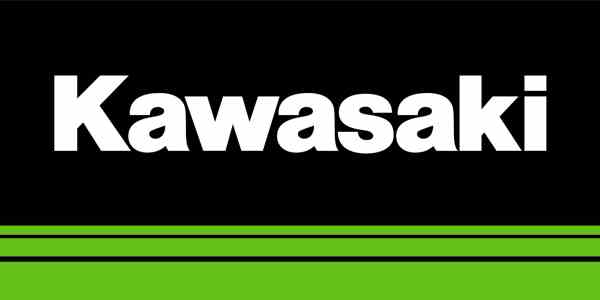Per square footage, the finance and insurance (F&I) department, aka “the box,” can be the most valuable space in your entire dealership. On the other hand, it can also play out to be a closet where relationships begin to bog out. In the box, you can either accept the circumstances of challenging deals as defeat, or you can prepare with a plan like a champion. Let’s holeshot towards a victory: Your winning mindset in the box needs to stay focused on protecting your customers as if it’s your life’s mission.
Most F&I pros begin their careers in the finance office with youthful aspirations, combined skill and energy only top reps have honed in on. They are fresh and ready for any and all types of deals, enthusiastic and packed with passion for satisfied customers. But somewhere along the endurance portion of this race, those feelings are hindered with customer objections, leading to setbacks in performance.
Let’s boost your process and unlock the five keys to shift better results in handling objections. But, before you get to the point of the sale where objections begin to happen, you really need to start with effective presentations for the services you’re proposing to your customer. Educational information and painting a picture through communication of the protections that your packages offer starts with a great customer needs assessment (CNA) or what some call “the interview.”
When done effectively, you will eliminate most objections solely based on the authenticity of your connection. You will face far less objections with good CNAs and effective presentation skills that weave the customer’s unique buying details to the service we offer.
If you capture anything from this material, the most helpful tip in presenting value is the motivation behind each customer’s purchase. It will always be the most ethical piece of information in objection handling. The customer why, or motivation, toward a purchase alone will be the strongest piece of data that can convert most nos into more yeses.
5 Step to B.O.O.S.T. Your Objection Handling
B: Build Connection
Build connection with customers by understanding their needs. Good rapport by understanding situational preferences and unique concerns is critical to any relationship. Building intentional rapport helps in creating a positive and trusting experience, which is crucial for addressing objections effectively, if they arise. It ultimately sets the foundation to customer loyalty. This foundational step needs to be built on firm footing, and it is your job to take ownership as the F&I pro.
O: Observation Concerns/Hesitations
Observe customer concerns or hesitations from saying yes. Actively listening to the customer’s objections in the box without interrupting is hard. But, to pay attention to their concerns and ask clarifying questions once they are done justifying their no is where the answers are. This observation step communicates that you hear them and value their opinions. Genuinely paraphrase what they have communicated so nothing is lost. Active interest in understanding their viewpoints is paramount to understanding what they are saying no to.
O: Offer Solutions
Offer solutions to why your customer needs this coverage. A quality interview will customize the solutions that specifically address the above concern/hesitation. Once the hesitation is isolated, simply ask him or her if the concern has been addressed properly. Would there be any other hesitation from saying yes? The customer’s concern here is pivotal in tailoring your responses to show how your service can meet his or her needs and alleviate worries. Once isolated, it is equally important to understand all of the concerns. This will keep you on track towards showing the customer value and a potential yes. Be ready to provide evidence, such as testimonials or case studies, to support your claims. The most authentic way is real life personal stories that connect to the value that you are offering. When you do this and tie in the “build connection” portion to it, customers will instinctually begin to trust your recommendations.
S: Sincerity
Highlight the unique benefits and features of your service that align with the customer’s needs with a genuine interest. Continue to emphasize the value he or she will receive, focusing on how it will enhance that person’s investment in fun and minimize the unexpected costs inherent throughout the ownership experience. Make sure the customer sees the overall worth beyond just the price. Be sincere.
T: Trust and Transparency
Maintain honesty and integrity throughout the conversation. When a question is asked in the box, there should be no skirting of the direct question. What’s the rate? What does the extended service contract (ESC) not cover? Direct, transparent answers are required without any pause or hesitation on your end. We are here to provide protection in the most open way the customer has ever experienced doing business. Be transparent about what you can and cannot do, and avoid overpromising at all costs. This will be counter-productive to what you are attempting to do.
Respecting the fact that most people have purchased a vehicle before, be the breath of fresh air that the powersports purchase experience should be. Building trust through clear communication continues to reassure the customer that their best interests are at the forefront of their purchase.
B.O.O.S.T Objection Handling Practice Sheet
Template
- Customer rebuttal
- Build rapport: Acknowledge the objection with gratitude and respect.
- Observe the main concern and hesitation from saying yes. Ask for clarification.
- Offer solutions: Change the focus onto what’s important to the customer.
- Sincerity: Offer a personal testimonial/customer story.
- Trust and transparency: Communicate verbally. Body language speaks loudly.
Example
Customer: I’m good. We’ll just take the unit. We never buy an extended service contract.
Build Connection: Acknowledge the Objection With Gratitude and Respect
You: I appreciate you sharing that with me. I can understand why you have this stance, but there’s a lot of data that suggests this really makes a lot of sense. At the end of the day, I want you to do what makes you feel certain and protected with your purchase. Earlier, you mentioned how important it is to get through some watery trails, and you mentioned you wanted a snorkeled machine, but you made it clear it must be under warranty because of previous broken machines. Correct?
Customer: Yes.
Observe the Main Concern. Ask for Clarification.
You: I guess that’s where my concern and confusion comes into play. But, before I address it, is there any other hesitation, other than you don’t buy ESC, that would hold you back if I am able to show you why you need it?
Customer: Yes, it’s my wife. She doesn’t like them.
You: Okay, thank you, and I understand. I once was that skeptical person until I saw it really saved my wallet. I didn’t believe in them until I was hit where it hurt: a slipping Honda Pioneer DCT. It was an expensive experience. I’ve got an idea. If I can show you the value, save you the heartache and get your wife to see the value of paying a few extra dollars a month, would there be any other hesitation that would hold you up from saying yes?
Customer: No, I would buy it if my expectations are met.
Offer Solutions: Change Focus of What’s Important to Them
At this point I would have the wife either on the phone or video chatting to discuss the value proposition, and I have several closes that help analyze the value to people who never buy ESCs.
Sincerity: Authenticity Paired With Awareness Are Great Tools
At this point, I’ve changed the focus to the value through my educational closes. I solidify by sharing a personal story or customer testimonial on why I do what I do, and how I have had personal benefit from these protections. This, tied with what is most important to the customer, becomes dynamic.
Trust and Transparency for the Win
Discuss what the protections do to the monthly payment. After full disclosure, reiterate that you want them to have a seamless ownership experience not only today but in year three when something goes haywire on the machine. Maintain compliance with the dealer’s compliance officer to ensure federal/state laws are being 100% adhered to. We can’t predict the future or guarantee results, but we sure can learn from the past and create processes toward better results through transparency.
0.01% Worry-Free Close
The key to this closing strategy is to ethically describe the complexity to engineering of powersport toys — the evolution from very simple mechanics in the 1980s/1990s/2000s into the advancement of technology and the ever-changing AI implementations that have begun to be installed into vehicles today.
The 99.9% worry-free purchases are not enough anymore; when the numbers scale, 0.01% exposure can become a huge out-of-pocket expense for prospective owners. (I use technology that compares prices/labor/parts/etc. to dial in real time numbers during my presentation.)
If the average car has 30,000 parts and pieces, it leaves us with a general ballpark of the amount of parts in our powersport vehicles. Even if we play it conservative with half, this still exposes the customer to a multitude of unprotected components once the factory warranty is expired:
15,000 parts/pieces x 0.01% = 150 broken parts exposure
Regardless of your technical experience in “the box,” never limit yourself by not using technology during your presentation. One-hundred-fifty broken parts and pieces can lead to hundreds or — in extreme situations — thousands of dollars of out-of-pocket, uncovered expenses. Once you’ve painted a clear picture of the complexity and real possibility of mechanical breakdowns, remind your customer that this investment is in fun. It is not an investment in how this will get fixed if it breaks out of warranty. Your customer deserves a professional presentation that leaves no stones unturned toward what is important protection to him or her.
Don’t underestimate the power of an effective CNA early on, prior to dealing with objections. Throttling forward, the benefits of an ESC would eliminate most exposure and uncertainty but never cut the features list short. Like the good ol’ adage, features tell and benefits sell. Blending of the two reminds me of Steve Jobs’ quote: “People don’t know what they want until you show it to them.”
Lets face it: Most of us perform like high moto racers, and that’s how F&I pros should be viewed as. We all need an occasional mindset tuneup so we can optimally run on all cylinders in the box. Make the next portion of your dream race into a high-standard training session for yourself, and watch your results skyrocket. Share ideas with your team, make practice fun, and continue to practice on all the various objections you may get throughout the month.
I firmly believe that with a good focus and game plan, you’ll immediately see how this process not only improves your customers’ ownership experience but collaterally benefits your department’s F&I results. Remember, the moto victory is in your hands. Grab life by the throttle, and you’ll go the direction you focus!














